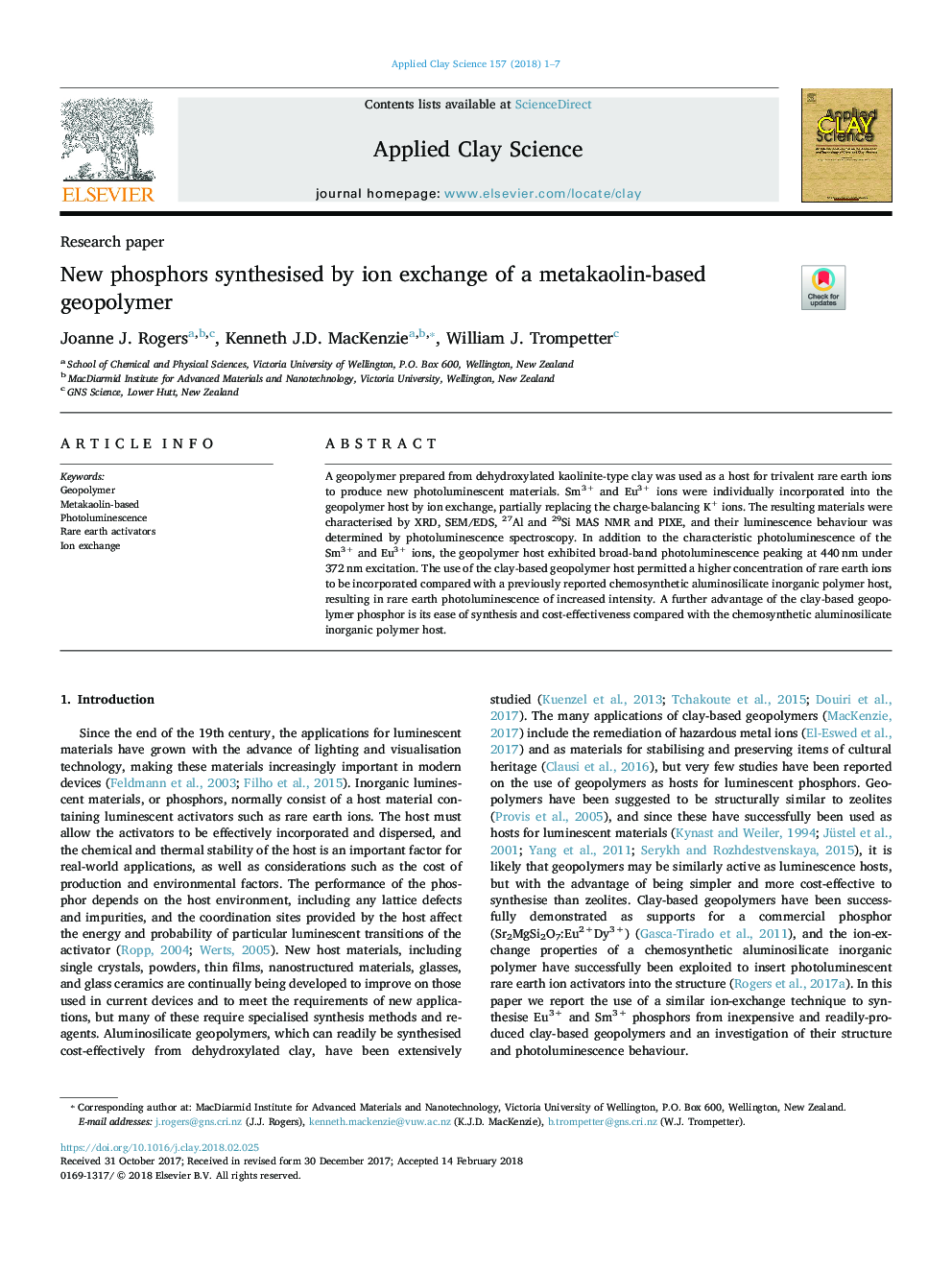| Article ID | Journal | Published Year | Pages | File Type |
|---|---|---|---|---|
| 8045974 | Applied Clay Science | 2018 | 7 Pages |
Abstract
A geopolymer prepared from dehydroxylated kaolinite-type clay was used as a host for trivalent rare earth ions to produce new photoluminescent materials. Sm3+ and Eu3+ ions were individually incorporated into the geopolymer host by ion exchange, partially replacing the charge-balancing K+ ions. The resulting materials were characterised by XRD, SEM/EDS, 27Al and 29Si MAS NMR and PIXE, and their luminescence behaviour was determined by photoluminescence spectroscopy. In addition to the characteristic photoluminescence of the Sm3+ and Eu3+ ions, the geopolymer host exhibited broad-band photoluminescence peaking at 440â¯nm under 372â¯nm excitation. The use of the clay-based geopolymer host permitted a higher concentration of rare earth ions to be incorporated compared with a previously reported chemosynthetic aluminosilicate inorganic polymer host, resulting in rare earth photoluminescence of increased intensity. A further advantage of the clay-based geopolymer phosphor is its ease of synthesis and cost-effectiveness compared with the chemosynthetic aluminosilicate inorganic polymer host.
Related Topics
Physical Sciences and Engineering
Earth and Planetary Sciences
Geochemistry and Petrology
Authors
Joanne J. Rogers, Kenneth J.D. MacKenzie, William J. Trompetter,
